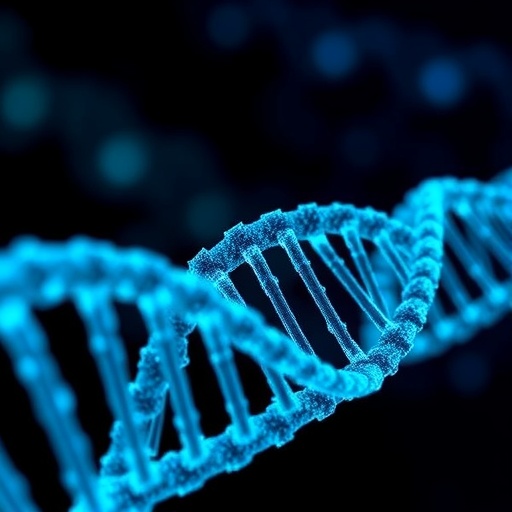Cells are complex entities that impose intricate requirements for the transport of materials necessary to maintain their various functions. Among these cellular components, the kinesin family of motor proteins plays a crucial role, particularly the protein known as KIF1A. This tiny molecular machine facilitates the movement of vital substances within nerve cells. However, when mutations occur in this vital protein, the consequences can be dire, leading to serious neurological disorders. These disorders manifest in various ways, including impaired locomotion, cognitive challenges, and even nerve degradation. The correlation between mutations in KIF1A and diminished motor performance is well established but poses a substantial challenge for researchers striving to gauge the extent of these effects in a quantifiable manner.
Recent advancements in the understanding and measurement of KIF1A’s function have emerged from collaborative research efforts stemming from institutions such as the University of Tokyo and the National Institute of Information and Communications Technology in Japan. In a groundbreaking study, researchers have developed a novel approach to measure changes in the force exerted by KIF1A using an ingenious design: a DNA-derived nanospring. This tiny, coiled structure presents an innovative avenue for accurately gauging the performance of KIF1A, which may eventually enhance the diagnosis of diseases linked to mutations in this crucial protein.
Among the neurological disorders associated with mutations in KIF1A is the KIF1A-associated neurological disorder (KAND). The implications of KAND are profound, drastically affecting the quality of life of those who suffer from it. Thus, there exists an imperative to focus research efforts on understanding this condition. Key to addressing the symptoms of KAND is the early and precise diagnosis, as timely intervention yields the best outcomes. Knowledge about the mechanical properties of KIF1A can facilitate an understanding of disease severity, underscoring the importance of accurate measurement techniques.
Previously reported findings have indicated that some KIF1A mutants produce a motor force of less than 1 piconewton, significantly lower than the approximately 3.8 piconewtons exerted by the healthy version. The challenge lies not only in the measurement of these forces but also in the practical difficulty posed by their minuscule nature. To put this into perspective, even the strongest variant of KIF1A exerts only a trillionth of the force required to lift a modest apple. Professor Kumiko Hayashi from the Institute for Solid State Physics at the University of Tokyo elucidates that earlier methodologies, such as optical tweezers powered by lasers, often yielded ambiguous signals and caused test samples to become detached. This limitation prompted the search for more effective measurement strategies, leading to the design of a DNA nanospring that could withstand the scrutiny of examination.
The DNA nanospring is characterized by its microscopic dimensions—it measures just a few nanometers long, a remarkable scale relative to the width of human hair. Its design allows for secure attachment to both an immovable surface and the KIF1A protein itself. The fundamental principle underlying its operation is straightforward: similar to conventional springs, the nanospring extends based on the force applied. An important facet of this nanospring is its luminescent properties, which allow researchers to visualize the degree of stretching as KIF1A pulls on it. By monitoring this fluorescence, Hayashi and her team could finely measure the force applied by KIF1A as it interacts with the DNA-derived nanospring.
Following the acquisition of fluorescence images depicting the nanospring’s deformation, it was essential to devise a method for estimating its length from the captured images. Hayashi remarked on the application of information science, which proved to be invaluable in the context of single-molecule analysis. This methodological fusion of biophysics and computational tools showcases the evolution of research strategies within the realm of molecular biology.
One of the most fascinating aspects of the study is the utilization of DNA origami to create the nanosprings. DNA origami is a cutting-edge technique that involves folding long strands of DNA using shorter strands to construct precise three-dimensional structures at a nanoscale. The predictable nature of molecular interactions among DNA constituents ensures that the folded structures adhere accurately to their designated designs. This innovative approach empowers researchers to develop tiny spring-like constructs with remarkable precision and adaptability.
While the DNA nanospring is unlikely to serve as a standalone treatment for KAND, its potential to aid in the accurate diagnosis of the condition marks a significant breakthrough. Such enhancements in diagnostic capabilities can substantially influence the management of the disorder. Currently, Hayashi and her research team are working on high-throughput data analysis methods, given that over 100 known mutations in KIF1A exist. Their vision extends to creating a comprehensive database cataloging measurements of force across these different variants.
As the link between the biophysical properties of KIF1A and the severity of associated diseases becomes clearer, the implications of their research extend into the realm of predictive modeling. Hayashi emphasized their objective to refine predictions regarding the severities of KAND by incorporating empirical data into AI-driven models of protein performance. This intersection of biology and artificial intelligence signifies a burgeoning frontier in understanding and potentially mitigating the effects of genetic mutations that contribute to debilitating disorders.
In conclusion, the researchers’ pioneering approach in measuring the mechanical properties of KIF1A via a programmable DNA nanospring is a remarkable advancement in molecular diagnostics. As they forge ahead with their work, the implications for neurology and genetics remain profound, potentially leading to a new era in understanding and treating complex neurodegenerative conditions. Emphasizing the crucial role of robust measurement techniques, their innovations inspire optimism for improved outcomes for patients grappling with the ramifications of KAND and similar disorders.
Subject of Research: Kinesin motor protein KIF1A
Article Title: Stall force measurement of the kinesin-3 motor KIF1A using a programmable DNA origami nanospring
News Publication Date: 7-Oct-2025
Web References: Journal Article
References: Hayashi, K., et al. (2025). “Stall force measurement of the kinesin-3 motor KIF1A using a programmable DNA origami nanospring,” eLife.
Image Credits: ©2025 Hayashi et al. CC-BY-ND
Keywords
KIF1A, kinesin, DNA nanospring, neurodegenerative disorders, protein mutations, diagnosis, molecular biology, biophysics, AI modeling.




